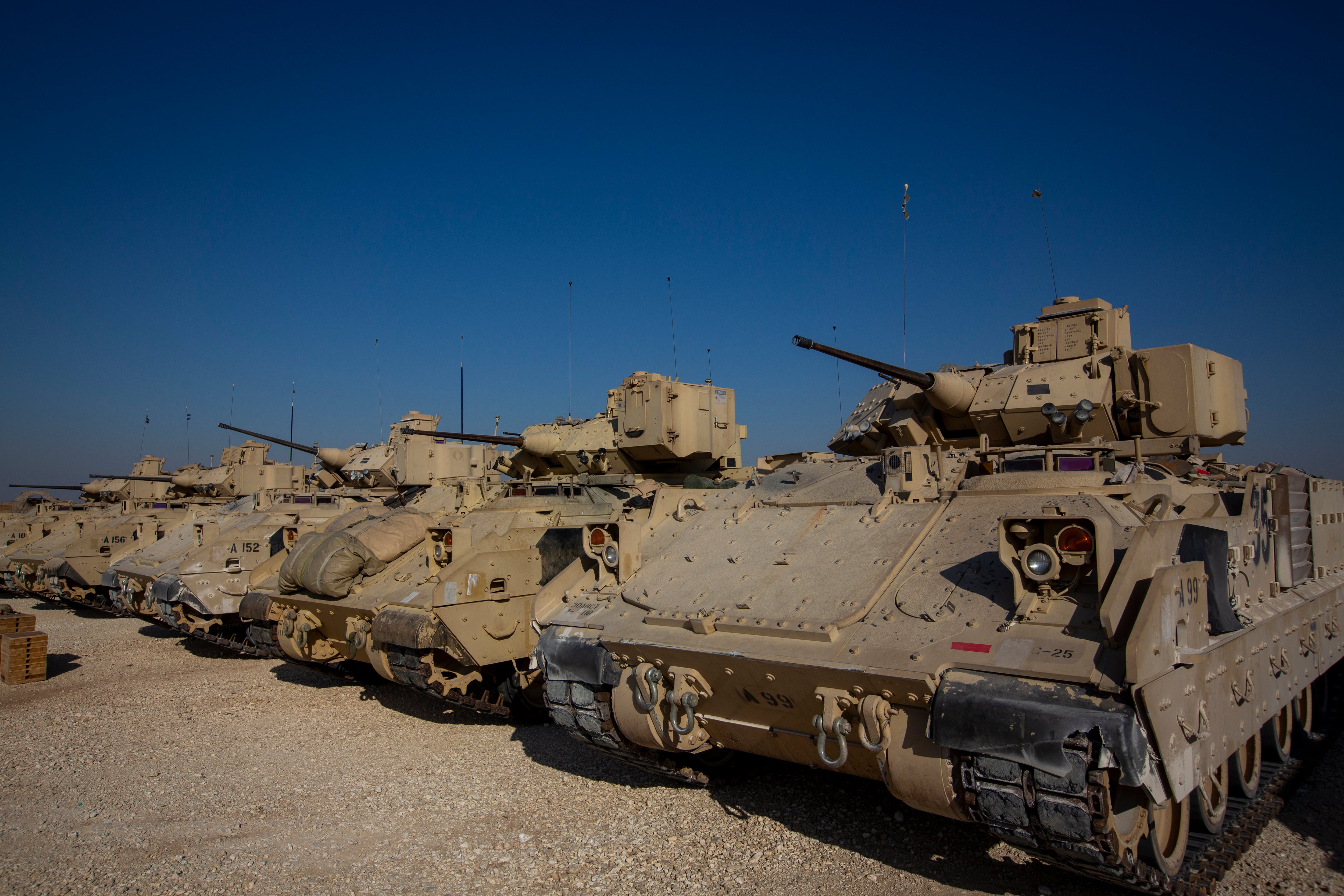WASHINGTON — The Army is wading back into an effort to replace the Bradley Infantry Fighting Vehicle with the release of a market survey on Feb. 7, tapping industry for ideas on what a future Optionally Manned Fighting Vehicle (OMFV) might look like.
After receiving only one bid in its previous attempt to develop and procure the OMFV and subsequently deciding to cancel the existing solicitation last month, the Army has a new plan to move forward that seeks to avoid some of the pitfalls encountered during its first try.
The market survey itself asks companies to weigh in on what affected their decisions to participate, or not, in the previous OMFV competitive effort and how the Army might better engage with industry this time around.
Instead of a laundry list of requirements that when paired together became unachievable — especially when delivered over an ambitious fielding goal of 2026 — the Army will be giving industry roughly nine characteristics, each of which will be laid out simply enough to take up just a page-and-a-half including a signature block, Army Futures Command Commander Gen. Mike Murray told a group of reporters at the Pentagon shortly before the release of the survey.
The Army had previously laid out requirements such as the need to transport two vehicles in a C-17, for example, which turned out to be a difficult ask to industry within the timeline the Army was pushing.
While the list of characteristics did not post with the market survey, Murray said the vehicle will have to protect soldiers, keep pace in a combined arms formation, be able to upgrade over time through open architecture, and be capable of growth without significant weight increases. It also must be lethal, and able to traverse bridges and main supply routes.
Additionally, the vehicle should be transportable by rail, air or sea, and crew members have to fit in the back. An on-board training system would also be nice, Murray said, adding that the Army wants to take a look at different options for power and energy sources.
Murray also stressed the document outlining the characteristics would change as the Army learned more down the road.
RELATED

Not required of industry will be physical bid samples as it previously requested. Only General Dynamics Land Systems was able to deliver a bid sample, but it did not meet all the requirements the service had laid out.
Defense News first broke the news that a Raytheon-Rheinmetall team was unable to get its Lynx combat vehicle to the United States from Germany in time and was subsequently disqualified and that BAE Systems, the incumbent, wouldn’t participate in the competition either.
The ability to see what was possible from a technology and integration standpoint “was important to us and so I wouldn’t say it was a mistake," Murray said of the decision to require a bid. “Did it lead to some problems we had? Maybe. But I would not characterize that as a mistake.”
The Army, instead, will take a more measured approach, holding conversations with industry, requesting white papers and then choosing five prime contractor teams to design rough digital prototypes, according to the Army’s acquisition chief, Dr. Bruce Jette.
The Army plans to involve “soldier touch points” at every stage of the process and give soldiers a chance to heavily evaluate designs along the way, he said.
Murray took pains to emphasize that soldiers would be involved in the design process, calling it “soldier-centered design,” which takes a page from other modernization efforts like the Integrated Visual Augmentation System (IVAS) program.
And before ever bending any metal, the service will downselect to a group of three contractors that will provide more refined and detailed digital prototypes akin to a critical design review stage.
Then the Army will choose two prime contractors to build prototypes that will be heavily tested and demonstrated in order to potentially choose a winner that would move into a manufacturing contract, Jette explained.
While the timeline was ambitious in the previous effort and Army modernization goals dictated that it had to stick to schedule over all else, a schedule or even a benchmark for the first unit equipped isn’t defined this time around. Murray said the Army will look to early conversations with industry to inform possible schedules based on what is feasible rather than setting an “arbitrary date” right up front.
The Army is also planning to look at up to five vendors for major subsystems or components, Jette said. He also noted the service wants to “encourage companies to bring forth technology” that may not want to be a prime contractor, but have capabilities like automated loaders and fire control systems as well as in-cab wireless connectivity.
“The barrier to entry is much lower for their investment,” he said. “By going to a digital design, as most do anyway, it makes it much easier for a company to participate as an [Original Equipment Manufacturer] OEM.”
Jen Judson is an award-winning journalist covering land warfare for Defense News. She has also worked for Politico and Inside Defense. She holds a Master of Science degree in journalism from Boston University and a Bachelor of Arts degree from Kenyon College.








